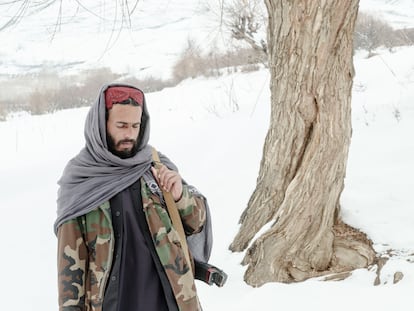A history of photography through love and desire
An exhibition and a book invite the viewer to assess the potential of images in showing the feelings that surround romantic relationships
Simon Baker, the director of the Maison Européenne de la Photographie (MEP) in Paris, tells of a time that he was looking through a Noyuyoshi Araki catalog with the photographer, when he came across an image of his wife. At that point, the artist exclaimed something to the effect of: “In all the time I spent with her, I thought I was photographing love, which was the subject of my work, but now when I look at these photographs of Yoko, I think that love is missing, that somehow I didn’t know how to capture it.” That demystifying statement by the creator of Sentimental Journey, a visual diary that traces the 19 years in which he obsessively photographed his beloved and for which he has been recognized as one of the earliest and most influential works of autobiographical photography, serves as the introduction to the Love Songs: Photography and Intimacy exhibition catalog. The exhibit is as romantic as it is raw; it invites the viewer to evaluate the potential of photography—which is inexorably associated with the real—for showing love, which is as invisible and elusive as it is complex and subjective in its definition.

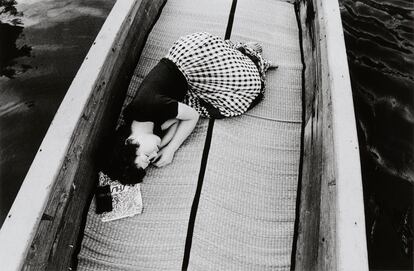
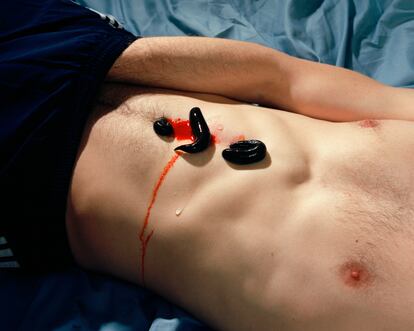
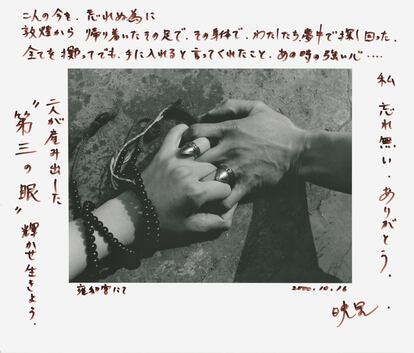
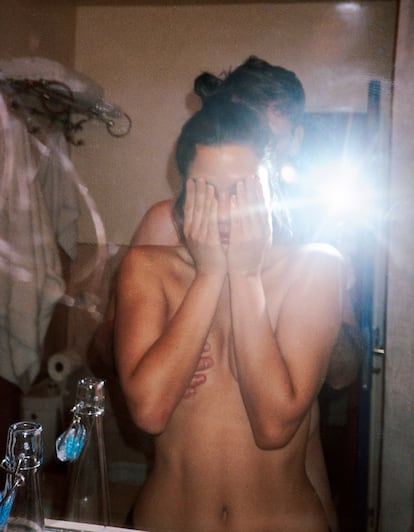
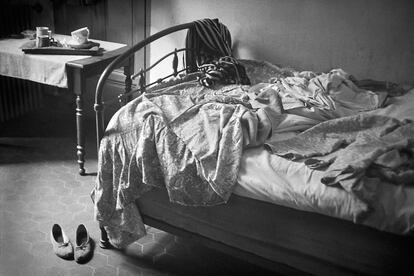

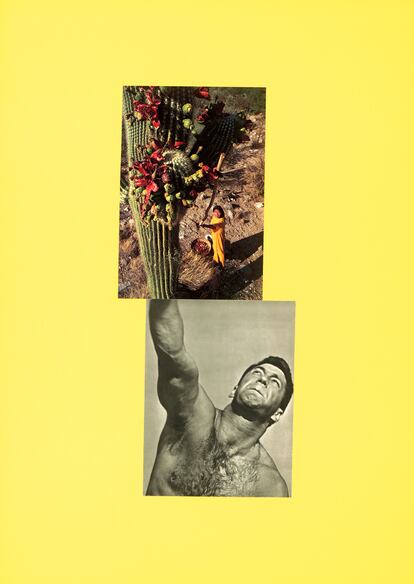
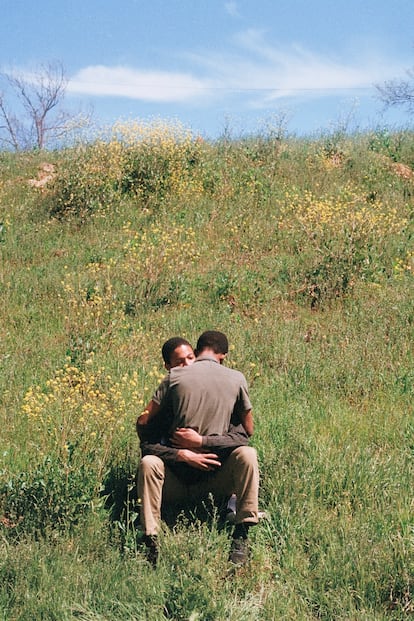
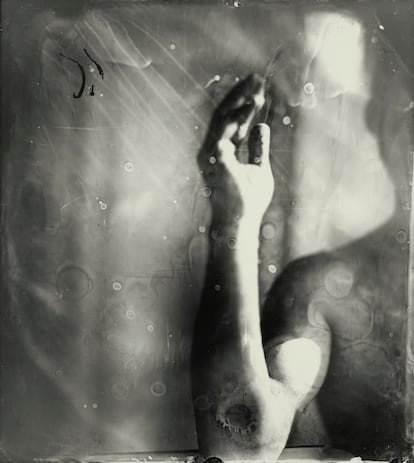
The exhibit showcases 16 artists from different parts of the world who offer different visions of love and desire, all from a personal perspective. The pieces date from 1952 to the present and are structured like a visual playlist, similar to those homemade mixtapes of music that were often exchanged with friends, family and lovers years ago (do some of you remember cassette tapes?). Side A has photographs dating from 1950 to 1990, while side B includes images from 2000 to the present day. The exhibition is a new version of the one staged at the MEP last year. Under the curatorship of Sara Razi, the initiative has been expanded to include the work of five new artists.
The starting point for this exhibit is Nan Goldin’s observation when her powerful The Ballad of Sexual Dependency was included in a group exhibition exploring voyeurism. The author posited the impossibility of being a voyeur of one’s own life. If so, what space do these photographic series offer the viewer for making sense of the intimacies [the artists] share with us? Baker asks. Do the creators invite us to identify with them?
The exhibition offers a wide repertoire of pieces on love and desire, from René Groebli’s tender and melancholic account of his honeymoon in Paris in L’oeil de l’amour (1952) to Clifford Prince King’s intimate 2019 photographs, which serve as a paean to freedom through queer Black love in stagings inspired by both real and imaginary moments. Other pieces focus on experiencing love during times of war, as in On War and Love (2006), in which Fouad Elkoury reveals the wounds the war in Lebanon inflicted on his love life and his environment through photographic montages and annotations. Other photographers examine love in times of AIDS, as reflected through the passionate and literary relationship of Hervé Guibert with Thierry Juno, who lends his name to the series Thierry (1976-1991).
The artist’s hand can be seen in Aikaterini Gegisian’s collages that gave shape to her book entitled Handbook of the Spontaneous; it was produced with materials from pornographic magazines and tourist travel catalogs, subverting the mercantilist and fetishist notions with which Western capitalist culture represents pleasure. Collier Schorr casts his eye on performance in the project Angel Z (2020-2021); the camera acts as a third presence, serving as a witness for exploring the figure of the muse. “What do you see when I look at you?” asks Angel Zinovieff, the photographer’s partner and collaborator.
Vulnerability is palpable in Motoyuki Daifu’s Lovesody (2008), which features a young pregnant mother of a two-year-old child who disrupts the photographer’s mind for six months. Meanwhile, in Proud Flesh (2003-2009), Sally Mann’s incisive and raw but tender gaze delves into the ravages of disease in love, documenting the progression of her husband Larry’s muscular dystrophy in a work that alludes to the dignity and acceptance of old age.

This exhibition could not leave out disaffection and revenge. Leigh Ledare asked his ex-wife to allow him to photograph her over four days in a cabin, only to ask her again to repeat the experience later, this time photographed by her new partner, fellow photographer Adam Fedderly. Using this material, Ledare created Double Bind (2010), which poses the comparison of the same situation as seen through two completely different circumstances: a relationship condemned to impossibility, and another one full of promise. Betrayal and deception come to the surface in the autobiographical fiction presented by Karla Hiraldo Voleau, Another Love Story (2021). After discovering that her partner was leading a double life, she hired a model who bore a resemblance to her ex-lover to stage past moments. “In this story of lies and things [left] to be said, the notion of the double is central,” the artist writes, dispossessed from her own story.
Between fear and desire
When Caroline Tompkins was studying photography in New York, she began dating a college classmate. He regularly photographed her nude and then uploaded her photos to the internet on a Reddit profile, where he pretended to be her without her knowledge. This was the first in a long series of bad experiences that shaped the author’s perception of relationships and laid the foundation for Bedfellow, a photobook that probes the relationship between pleasure and danger. It expresses vulnerability through bucolic shots of the American landscape and leeches sliding over a young man’s naked torso. “Dreaming of leeches means understanding that something is sapping your strength,” she confesses in a text sprinkled with humor. [JK1] “It helped me to take control of the situation and feel more powerful, to regain control and dignity. When exposing my intimacy, I needed to use humor to feel safe,” the photographer explains in a videoconference.

“I set out to do a piece on sex and lust in my relationships. Right away, I realized that a lot of the images were pretty scary. Very unsensual. An erect penis might look anything but sexy. I think what fascinates me most are the extremes; on the one hand, sex and love, and on the other, fear and anxiety,” says Tompkins. “Women carry a lot of contradictions inside us, and something as liberating as loving a man can also mean feeling like his prisoner[JK2] . Even the act of sex itself can be complicated and violent. The two sides of the same coin are expressed when you go on a date and make sure you tell your friend where you are going. With dating in modern life, there’s the implication of fear and violence…that changes the meaning of desire.”
The publication greets the reader with the first photo, in which the author reinterprets Stephen Shore’s famous image Michael and Sandy Marsh. In the original, a man looks attentively at the camera while embracing a woman on a sofa; Tompkins inverts it, replacing the man with a young woman, whose expression contains more uncertainties than certainties. “I wanted to refer to the anxiety that both men and women can experience. Not all women and men feel the same way,” she says. At the same time, she acknowledges that “the male gaze still owns objectification. When we see a photo of a man posing like a sexy woman might, we often read it as homoerotic, we don’t associate it with a woman’s desire. Why do sexy photos of men taken by women look different? At least in my experience, sexy photos of men take into account fear, violence, power differences, something that gives them added nuance.”
Love Songs: Photography and Intimacy. International Center of Photography. New York. Through September 11.
Bedfellow. Caroline Tompkins. Palm* Studios. 128 pages. €52.
Sign up for our weekly newsletter to get more English-language news coverage from EL PAÍS USA Edition
Tu suscripción se está usando en otro dispositivo
¿Quieres añadir otro usuario a tu suscripción?
Si continúas leyendo en este dispositivo, no se podrá leer en el otro.
FlechaTu suscripción se está usando en otro dispositivo y solo puedes acceder a EL PAÍS desde un dispositivo a la vez.
Si quieres compartir tu cuenta, cambia tu suscripción a la modalidad Premium, así podrás añadir otro usuario. Cada uno accederá con su propia cuenta de email, lo que os permitirá personalizar vuestra experiencia en EL PAÍS.
¿Tienes una suscripción de empresa? Accede aquí para contratar más cuentas.
En el caso de no saber quién está usando tu cuenta, te recomendamos cambiar tu contraseña aquí.
Si decides continuar compartiendo tu cuenta, este mensaje se mostrará en tu dispositivo y en el de la otra persona que está usando tu cuenta de forma indefinida, afectando a tu experiencia de lectura. Puedes consultar aquí los términos y condiciones de la suscripción digital.
More information
Últimas noticias
Maduro pleads not guilty before the federal court in New York: ‘I am still the president of Venezuela’
A new test can detect Alzheimer’s from a finger prick
UN team enters Sudanese city of El Fasher after paramilitary massacre: ‘It’s like a ghost town’
A recipe for resistance: Indigenous peoples politicize their struggles from the kitchen
Most viewed
- Gilles Lipovetsky: ‘If you want to live better and fall in love, take Prozac, don’t look to philosophy’
- Alain Aspect, Nobel laureate in physics: ‘Einstein was so smart that he would have had to recognize quantum entanglement’
- Alvin Hellerstein, a 92-year-old judge appointed by Bill Clinton, to preside over Maduro’s trial in New York
- Why oil has been at the center of Venezuela-US conflicts for decades
- Cuba confirms death of 32 of its citizens in the US attack against Venezuela

